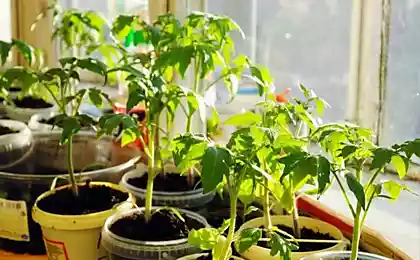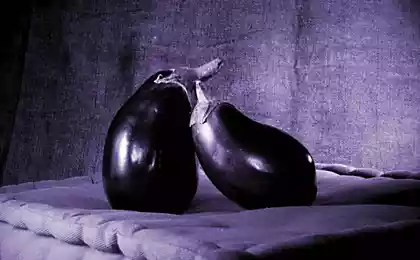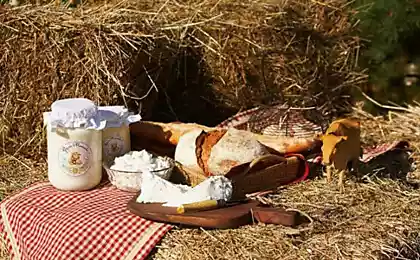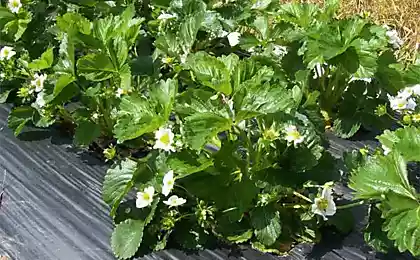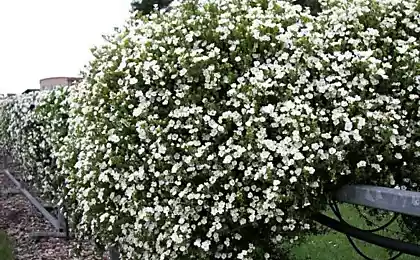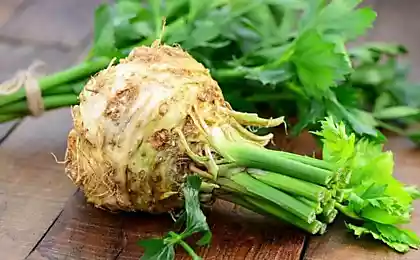704
The secrets of growing celery
Celery in the garden
Celery, pimento, celery or cultural celery (Apium graveolens) is a biennial vegetable plant. The name "allspice" celery received thanks to a strong spicy smell due to the high content of essential oils in the leaves.
Twice pinnately dissected celery leaves collected in the rosette, grow 1 meter in height. In the first year celery, like other biennial culture, forms a rosette of leaves and roots, in the second year blooms. By the way, the celery leaves are very similar to parsley leaves.
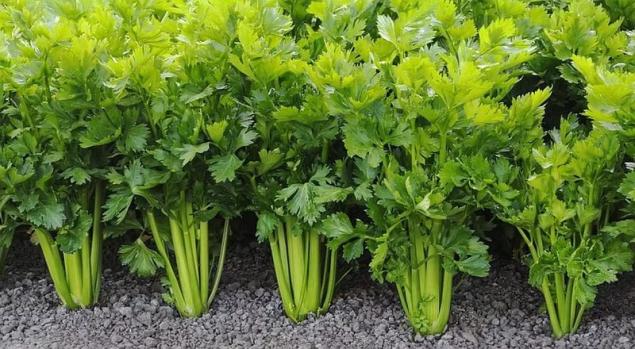
There are three varieties of celery: leaf, petiolar and root. Sheet celery only get leaves, petiolate leaves and petioles from the root of celery — leaves and roots.
Requirements for growing celery
All varieties of celery grow best in moist soils, as it relates to moisture-loving vegetable plants. The lack of moisture in the soil, the tender leaves and juicy flesh of the root stiffen. For planting celery you can use the reduced space on the site, where moisture lingers longer in the ground.
To light leaf celery is not demanding root and petiolar — undemanding. Celery belongs to vegetables of a long day.
Celery is very responsive to liming of soils,prefers highly fertile soil, so the beds under it is desirable to make the 6-8 kg of organic fertilizers (compost, rotted manure, compost) per 1 m2 in the autumn when digging the soil, and also mineral fertilizers: 10-15 g of urea or ammonium nitrate, 20-25 g of superphosphate, double superphosphate and 10 g of potassium chloride or other potassium salt per 1 m2 in spring as soon as soil dries, with the incorporation of a rake, approximately 2-3 weeks before planting the celery in the open ground.
Celery — cold-resistant plant. Its seeds in the open ground the seeds germinate at + 3oC, and seedlings are able to tolerate spring frosts down to – 5oC. But due to the fact that the growing period of celery is very long, up to 140 – 180 days, and when sowing seeds in open ground celery does not have time to form a complete socket and the root, so it is much better to grow it through seedlings, particularly the root and petiolar celery. The more that you need only 20-30 plants to fully provide for a family of 4, and a number of seedlings it is possible to grow on the window.
The cultivation of seedlings of celery
At the end of February in a bowl filled ground, level and gently step on (to avoid cavities), moisturize. Celery seeds can be soaked, but you can sow and dry.
Seeds are sown evenly over the surface to wet the ground, sprinkle the top with a thin layer of earth or sand (you can not cover, since seeds germinate equally in the light, and covered with earth), again sprayed and covered with glass or package to create a favorable humidity. The earth is moistened with a spray bottle as it dries. Celery seeds germinate in 2-3 weeks. With the emergence of film or glass clean.
Further, the care of seedlings of celery is the same as for other seedlings of vegetable and flower crops. The appearance of 2-3 true leaves of celery seedlings dive into individual small cups or pots. Before planting in the ground you may need another transplant celery in a little more utensils.
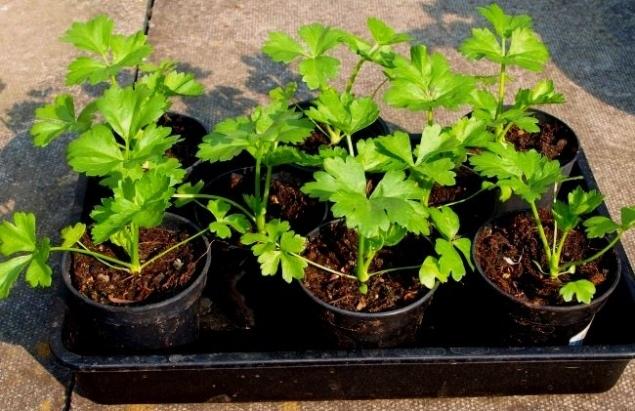
If cups is not, then the seedlings celery seedlings dive in the box, leaving between adjacent plants about 10 cm of celery Seedlings before planting in open ground need tempering, on warm days to make the open air in a shade.
In may, when the threat passes the return of frost and cold snaps, celery seedlings planted in open ground.
If seedlings of celery in individual cups, just make the handling of the Cup in the open ground. If the seedlings were grown in the common box, then before landing it you need to carefully pour water, so that the earth became soft, and not damage the roots.
The roots of each plant can be dipped in a mash of clay and manure (cow dung) either in a solution kornevina rooting for the best. When planting celery with open root system justified landing "in the dirt", so she quickly adapts and celery leaves into growth.
Celery planted in rows, the distance between adjacent plants in a row of 18-20 cm between rows — 20 cm At planting to make sure that the growing point of celery was not under the ground, plants can not be sunk, otherwise they will be very weak, hard and long will grow, you will not have time to form a full rosette, and especially the root.
After planting the celery watered with warm water. After watering again check whether all plants of the same planting depth. Too deep planting the ground shovel. If the ground settled after watering, then the plant need to pour more soil or humus.
Caring for celery
Further care celery is watering, loosening the soil, weeding, fertilizing. Celery is very responsive to watering, to maintain moisture in the soil surface can be mulched with humus. The next day after watering it is advisable to loosening of row spacing.
The first fertilizing is carried out after planted seedlings of celery will take root and will begin to move into growth, about 2-3 weeks after planting, at this time, make the mineral fertilizer: 5-10 g of ammonium nitrate or urea, 15 g of superphosphate, 5-7 g of potassium chloride. Before fertilizing the land should be raw, feeding is carried out in the evening after sunset. Fertilizer can be dissolved in water to make dry, or after watering with subsequent incorporation into the earth. Instead of mineral nitrogen fertilizers you can use organic: a solution of mullein or bird droppings.
The second top dressing of celery carried out at the end of June, when intensive growth the leaves of celery, the third — in late July – early August, when formed by the root. During these feedings use superphosphate and potassium chloride.
When growing celery petiolar pay attention to one nuance. To the celery stalks were juicy, sweet (no bitterness), reception — whitening petioles.
This leaves each root socket of celery together, wrapped in paper (a piece agrocana in 2-3 layers), a little tie and a little primetyvajut the ground to fix the lower edge of the paper or material. Petioles without access to sunlight become white, juicy more, purchase "shop" the shape of rosettes. You can just hill the rosette of celery land, but in this case, the stalks will taste a little worse.
Plantings of celery may harm the coriander sameed.
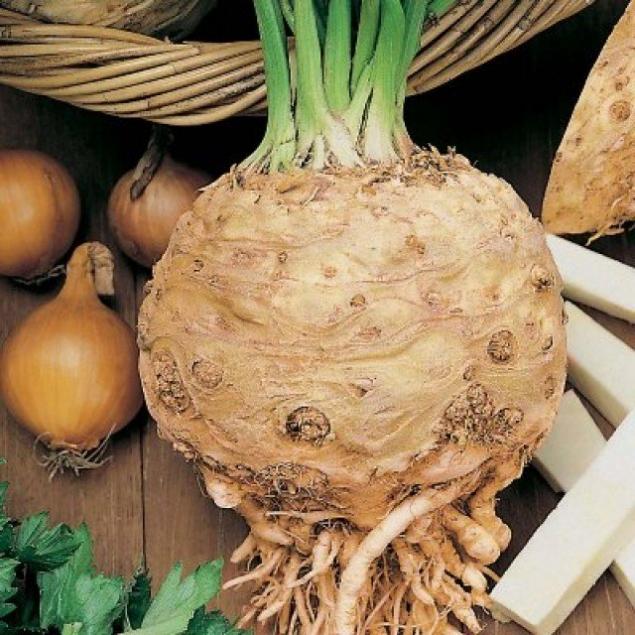
Cleaning celery
The green celery is used during the growing period: as sample sheets and sample plants after thinning of plantations.
Storage petiolate celery fresh. Petiolar celery can be added dropwise with leaves in the greenhouse or a greenhouse. For this purpose, the stalks along with the leaves placed horizontally across the beds, plunging the plants in humus soil. It is important that the plants do not touch each other, so between the plants, leaving a distance of 6-8 cm between rows, 10-15 cm, the Temperature in the greenhouse should be around + 6 to + 10oC. Outlets and celery on top prosypayutsya humus soil. This way you can stretch the shelf life of petiolar celery and use it in cooked fresh as needed.
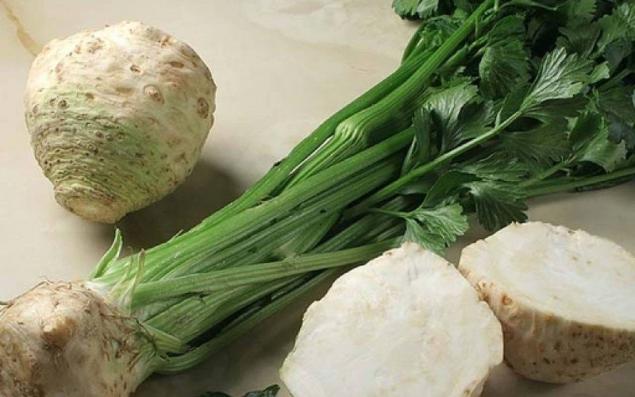
Cleaning and storing celeriac
A sign of the ripening of the root of celery is considered a yellowing of the upper leaves. Celery tolerates light frosts, so hurry to cleaning should not be.
In October, celeriac dig with a shovel or pitchfork, clear of the ground, the leaves are cut almost at the level of the head, leaving only a small length of petioles 2-3 cm from the root. The leaves can be used in food in fresh form, or dry (salt, freeze), and root crops to send the Deposit. Stored root vegetables, celery is exactly the same as the carrots. If it is not possible to store root vegetables celery fresh, they can grind and drier.
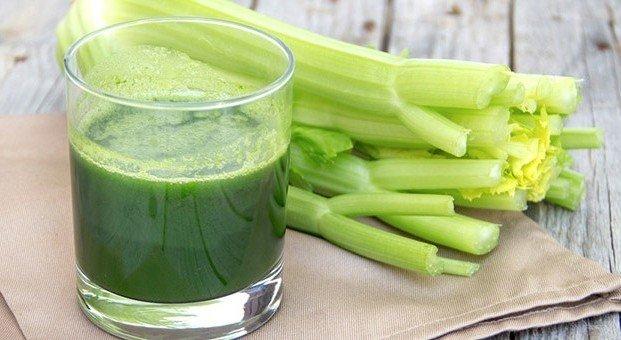
All parts of celery in any form used with great success for soups and side dishes, salads, drinks, and various seasonings. published
P. S. And remember, just changing your mind - together we change the world! ©
Source: floweryvale.ru/our-garden/growing-celery.html
Celery, pimento, celery or cultural celery (Apium graveolens) is a biennial vegetable plant. The name "allspice" celery received thanks to a strong spicy smell due to the high content of essential oils in the leaves.
Twice pinnately dissected celery leaves collected in the rosette, grow 1 meter in height. In the first year celery, like other biennial culture, forms a rosette of leaves and roots, in the second year blooms. By the way, the celery leaves are very similar to parsley leaves.

There are three varieties of celery: leaf, petiolar and root. Sheet celery only get leaves, petiolate leaves and petioles from the root of celery — leaves and roots.
Requirements for growing celery
All varieties of celery grow best in moist soils, as it relates to moisture-loving vegetable plants. The lack of moisture in the soil, the tender leaves and juicy flesh of the root stiffen. For planting celery you can use the reduced space on the site, where moisture lingers longer in the ground.
To light leaf celery is not demanding root and petiolar — undemanding. Celery belongs to vegetables of a long day.
Celery is very responsive to liming of soils,prefers highly fertile soil, so the beds under it is desirable to make the 6-8 kg of organic fertilizers (compost, rotted manure, compost) per 1 m2 in the autumn when digging the soil, and also mineral fertilizers: 10-15 g of urea or ammonium nitrate, 20-25 g of superphosphate, double superphosphate and 10 g of potassium chloride or other potassium salt per 1 m2 in spring as soon as soil dries, with the incorporation of a rake, approximately 2-3 weeks before planting the celery in the open ground.
Celery — cold-resistant plant. Its seeds in the open ground the seeds germinate at + 3oC, and seedlings are able to tolerate spring frosts down to – 5oC. But due to the fact that the growing period of celery is very long, up to 140 – 180 days, and when sowing seeds in open ground celery does not have time to form a complete socket and the root, so it is much better to grow it through seedlings, particularly the root and petiolar celery. The more that you need only 20-30 plants to fully provide for a family of 4, and a number of seedlings it is possible to grow on the window.
The cultivation of seedlings of celery
At the end of February in a bowl filled ground, level and gently step on (to avoid cavities), moisturize. Celery seeds can be soaked, but you can sow and dry.
Seeds are sown evenly over the surface to wet the ground, sprinkle the top with a thin layer of earth or sand (you can not cover, since seeds germinate equally in the light, and covered with earth), again sprayed and covered with glass or package to create a favorable humidity. The earth is moistened with a spray bottle as it dries. Celery seeds germinate in 2-3 weeks. With the emergence of film or glass clean.
Further, the care of seedlings of celery is the same as for other seedlings of vegetable and flower crops. The appearance of 2-3 true leaves of celery seedlings dive into individual small cups or pots. Before planting in the ground you may need another transplant celery in a little more utensils.

If cups is not, then the seedlings celery seedlings dive in the box, leaving between adjacent plants about 10 cm of celery Seedlings before planting in open ground need tempering, on warm days to make the open air in a shade.
In may, when the threat passes the return of frost and cold snaps, celery seedlings planted in open ground.
If seedlings of celery in individual cups, just make the handling of the Cup in the open ground. If the seedlings were grown in the common box, then before landing it you need to carefully pour water, so that the earth became soft, and not damage the roots.
The roots of each plant can be dipped in a mash of clay and manure (cow dung) either in a solution kornevina rooting for the best. When planting celery with open root system justified landing "in the dirt", so she quickly adapts and celery leaves into growth.
Celery planted in rows, the distance between adjacent plants in a row of 18-20 cm between rows — 20 cm At planting to make sure that the growing point of celery was not under the ground, plants can not be sunk, otherwise they will be very weak, hard and long will grow, you will not have time to form a full rosette, and especially the root.
After planting the celery watered with warm water. After watering again check whether all plants of the same planting depth. Too deep planting the ground shovel. If the ground settled after watering, then the plant need to pour more soil or humus.
Caring for celery
Further care celery is watering, loosening the soil, weeding, fertilizing. Celery is very responsive to watering, to maintain moisture in the soil surface can be mulched with humus. The next day after watering it is advisable to loosening of row spacing.
The first fertilizing is carried out after planted seedlings of celery will take root and will begin to move into growth, about 2-3 weeks after planting, at this time, make the mineral fertilizer: 5-10 g of ammonium nitrate or urea, 15 g of superphosphate, 5-7 g of potassium chloride. Before fertilizing the land should be raw, feeding is carried out in the evening after sunset. Fertilizer can be dissolved in water to make dry, or after watering with subsequent incorporation into the earth. Instead of mineral nitrogen fertilizers you can use organic: a solution of mullein or bird droppings.
The second top dressing of celery carried out at the end of June, when intensive growth the leaves of celery, the third — in late July – early August, when formed by the root. During these feedings use superphosphate and potassium chloride.
When growing celery petiolar pay attention to one nuance. To the celery stalks were juicy, sweet (no bitterness), reception — whitening petioles.
This leaves each root socket of celery together, wrapped in paper (a piece agrocana in 2-3 layers), a little tie and a little primetyvajut the ground to fix the lower edge of the paper or material. Petioles without access to sunlight become white, juicy more, purchase "shop" the shape of rosettes. You can just hill the rosette of celery land, but in this case, the stalks will taste a little worse.
Plantings of celery may harm the coriander sameed.

Cleaning celery
The green celery is used during the growing period: as sample sheets and sample plants after thinning of plantations.
Storage petiolate celery fresh. Petiolar celery can be added dropwise with leaves in the greenhouse or a greenhouse. For this purpose, the stalks along with the leaves placed horizontally across the beds, plunging the plants in humus soil. It is important that the plants do not touch each other, so between the plants, leaving a distance of 6-8 cm between rows, 10-15 cm, the Temperature in the greenhouse should be around + 6 to + 10oC. Outlets and celery on top prosypayutsya humus soil. This way you can stretch the shelf life of petiolar celery and use it in cooked fresh as needed.

Cleaning and storing celeriac
A sign of the ripening of the root of celery is considered a yellowing of the upper leaves. Celery tolerates light frosts, so hurry to cleaning should not be.
In October, celeriac dig with a shovel or pitchfork, clear of the ground, the leaves are cut almost at the level of the head, leaving only a small length of petioles 2-3 cm from the root. The leaves can be used in food in fresh form, or dry (salt, freeze), and root crops to send the Deposit. Stored root vegetables, celery is exactly the same as the carrots. If it is not possible to store root vegetables celery fresh, they can grind and drier.

All parts of celery in any form used with great success for soups and side dishes, salads, drinks, and various seasonings. published
P. S. And remember, just changing your mind - together we change the world! ©
Source: floweryvale.ru/our-garden/growing-celery.html
These seeds have a beneficial effect on the digestive and hematopoietic system
HOW to distinguish real hunger from a psychological

